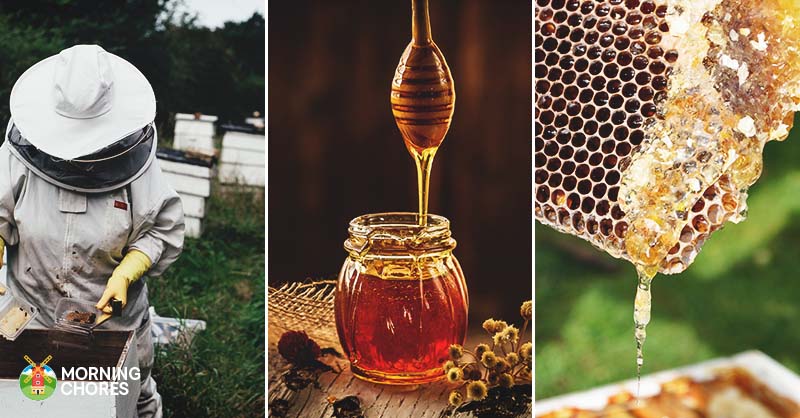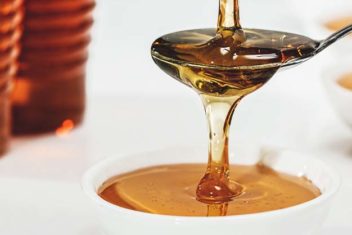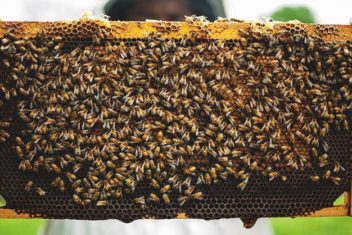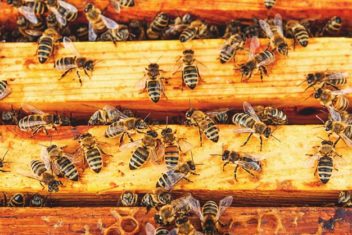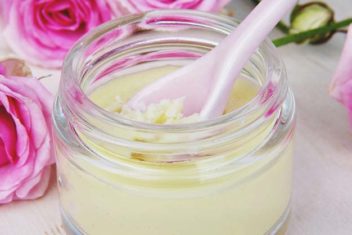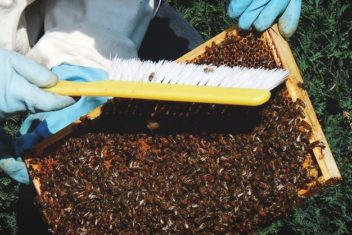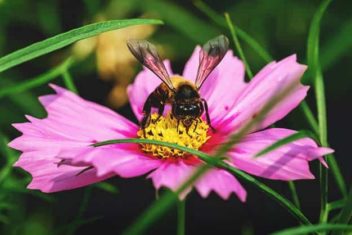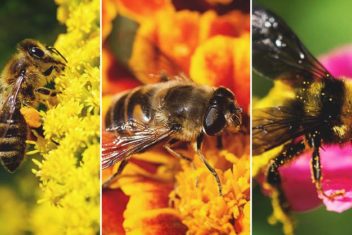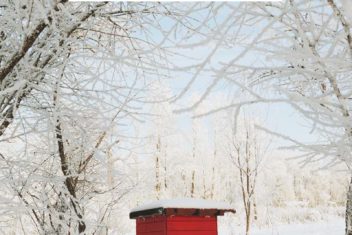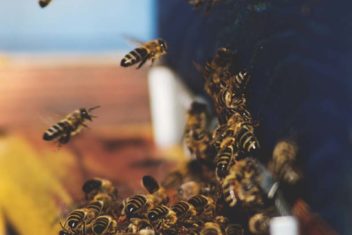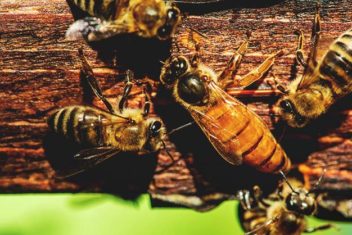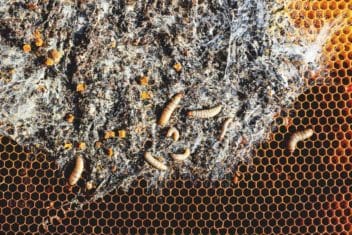Do you raise bees? If so, have you attempted to harvest your own honey yet?
Well, we have been raising bees for the past 3 years or so and have been harvesting honey each year. We recently just pulled honey from our hives last week.
So I wanted to share with you how we did this in hopes to help those who are considering raising bees or are looking for resources on how to harvest their own honey.
Here is how we go about harvesting honey:
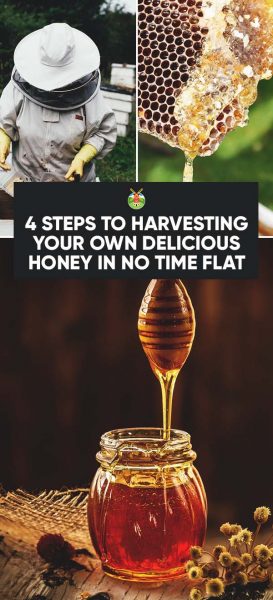
1. Pull the frames
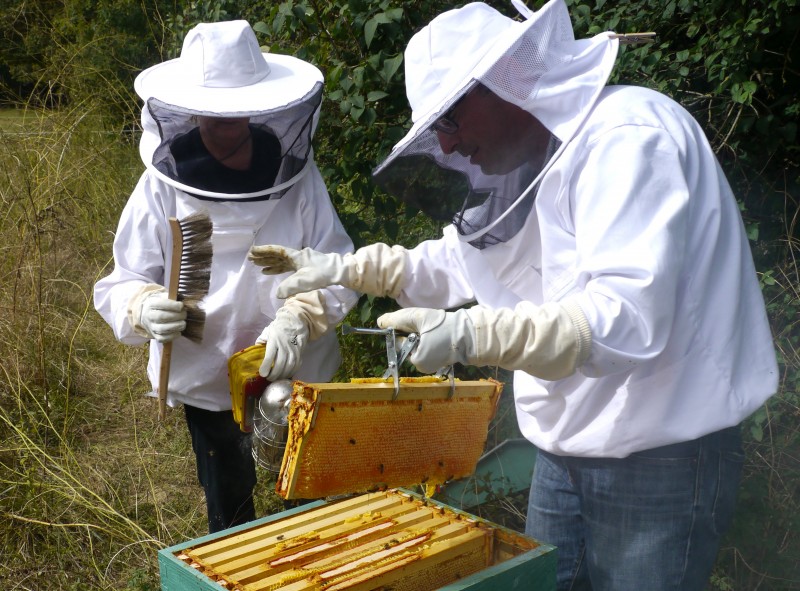
via Cox’s Honey
We begin the process by removing the frames from the hive. You don’t want to pull the frame that has brood on it.
Instead, you want to only pull the frames that have honey in them and the honey has been capped. You may wonder what it means for the honey to be ‘capped.’
Well, when the bees are done filling in the frame, they will go over each cell and ‘cap’ it with their wax. Bees are very interesting creatures that have very unique methods. The reason they cap it is to keep any water from getting in the honey and causing it to spoil.
Actually, when bees are in the honey making process they will fan the honey to help pull the moisture out. Then when the moisture levels are right, they’ll cap it.
As I said, they are very interesting creatures that are also very complex.
2. Uncap the Honey
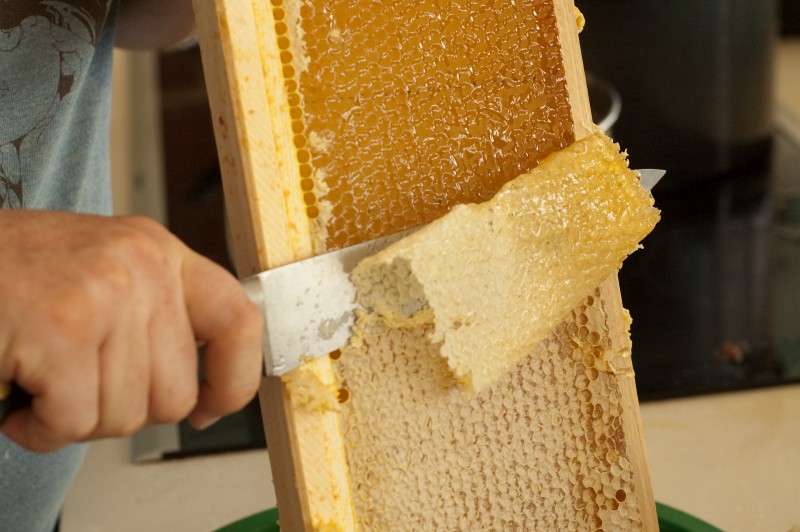
via Cox’s Honey
Next in the process, you’ll want to uncap the honey. When harvesting your goal is not to store the honey (as the bees’ goal was), you are looking to pull the honey out of the frame.
So you’ll have to remove the wax from each of the cells. There are multiple methods to accomplish this.
First, you can use the fork method. There is an uncapping fork that you can purchase that will slide into each cell and gently pull the wax cover off of the frame.
However, this method takes a while because you are pulling each individual cell’s wax loose. If you have only a hive or two, then this method might work.
For us, we usually have anywhere from 10-30 hives per year. Obviously, this method isn’t quite as efficient as what we might need.
Second, you can use the roller method. You can purchase a roller uncapper. Instead of pulling each individual cell loose of the wax like you do with the fork method, you just roll this contraption over the frames and it pulls the wax loose.
However, the downside to this method is that it pushes some of the wax into the honey. It won’t hurt anything to ingest, but you probably don’t want wax in your honey. Especially if you are intending to sell the honey.
Finally, there is the knife method. This doesn’t require any special tools besides a sharp knife. You will have to put adequate space between frames inside the hive.
Then the bees will actually build the comb out a little past the edge of each frame. So then you can just run the sharp knife down the edge of the comb and remove all of the wax at once. It is very efficient and doesn’t get wax into your honey.
As you can probably tell, this is the method that we use with our own bees because of how efficient the process is.
3. Place the Frames in the Extractor
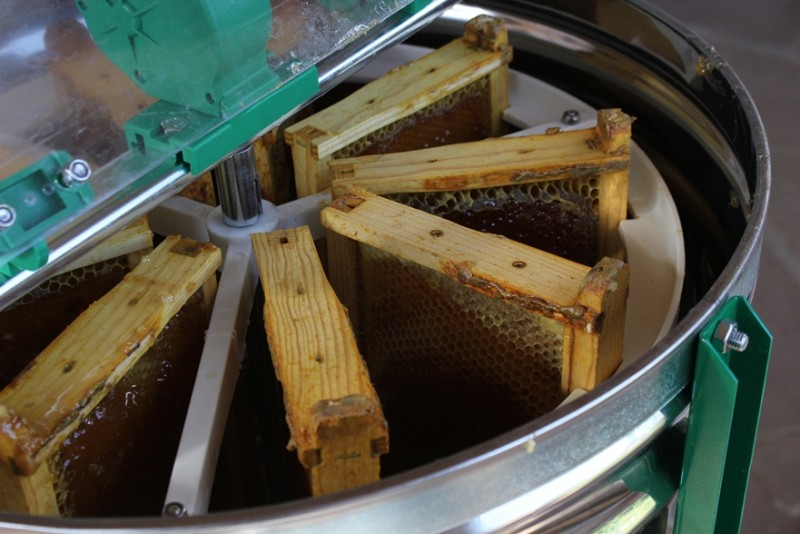
via Lazy Homesteader
Once all of the caps have been removed from the frames it is time to extract the honey. We use a honey extractor.
Now, there are different options for a honey extractor. When we first began we had a hand cranked honey extractor. It worked just fine but grew time-consuming and tiresome as the number of hives grew.
So we just recently upgraded to an electric extractor.
Regardless of the type of extractor you have, (unless specified otherwise in your user’s manual) you’ll just place the frames in the extractor and either turn the extractor on or crank it round and round.
As you the extractor turns, it slings the honey out of the frames and into a pan at the bottom which holds all of your honey for you.
Once you have pulled all of the honey out of the frames in the extractor, you’ll want to dump the honey into a food grade bucket and repeat the process until all of the honey has been extracted from all of the frames.
4. Bottle the Honey
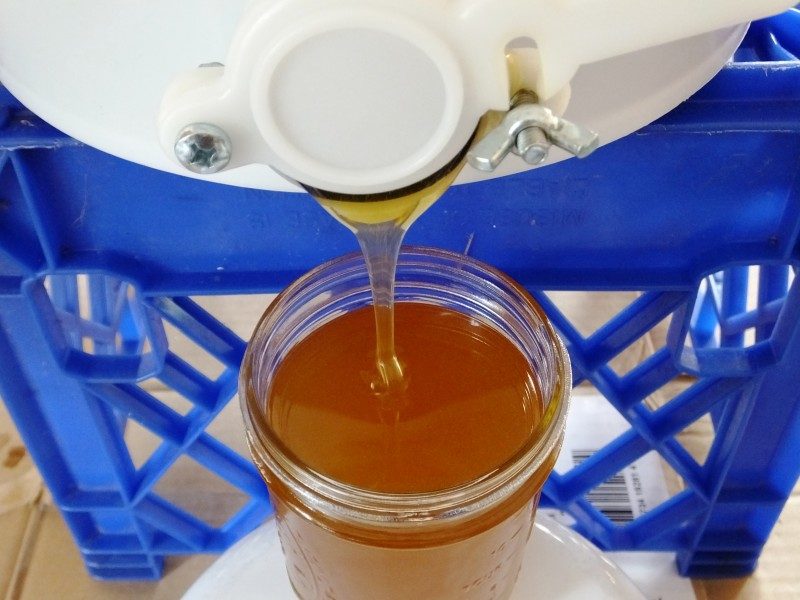
via Virginia Wright
Finally, you’ll want to store your honey. You will have placed your honey into a food grade bucket. I recommend that you use a bucket like this that has the release valve in it. It makes filling your bottles or jars much easier.
Then you’ll get your glass jars or your bottles and place them at the honey gate (or release valve) of the bucket. You’ll open the valve until the bottle or jar is filled, then close it.
Then you’ll repeat the process again and again until all of the honey has been bottled and stored. You will not need to refrigerate the honey or anything like that. Real honey does not go bad. It may crystalize, but even so, just pop it in your microwave for 10-20 seconds and it will liquify all over again.
And that is all there is to extracting your own honey.
How Often Do You Pull Honey?
I realize if you are new to beekeeping that you may have some questions about extracting honey. So I’m going to try and answer a few of the most common questions about extracting honey.
First, how often should you pull honey? Well, that will depend upon the year. As long as things aren’t super dry and we don’t skip over seasons (like what had happened last year), then you should be able to pull in the spring, summer, and a final pull in the fall.
We pull all of the honey from the bees in the spring. We do this because they will have plenty of time to rebuild their supply before winter.
Then we pull any excess honey from them in the summer, again, because they still have some time to rebuild some of their supply. We don’t pull it all in the summer because that is a lot of work for the bees to make up.
Finally, in the fall, we’ll pull only the excess honey. This means, if I have a large hive that is stacked a few boxes high, I’ll pull anything above the main chamber. The reason is that bees greatly decrease in numbers over the winter. They view it as extra mouths to feed.
So all of the drones will be kicked out of the hive, and the summer bees will die off. The queen produces ‘super bees’ that are meant to overwinter. They are a little larger, live longer, and are meant to be able to keep her warmer.
What does all of this mean? It means that the hive won’t have to support as many bees so we reduce all of our hives down to a single hive (or two) at the largest. The smaller the hive, the less they have to do in order to keep it warm.
Then we will pull any honey from the hive boxes that we are removing. We make sure our bees have a full hive of honey for the winter, a full feeder, and fondant as well.
So as long as they have all of that they should be fine.
Does it Harm the Bees when Harvesting Honey?
In short, no, it does not harm the bees. You will probably make them angry if they realize you are taking it from them.
However, we have very docile bees right now that basically couldn’t care less that we are in their hive messing around.
But you need to be aware of what you are doing when you are harvesting honey. Always make sure that the bees have enough to survive on. If you don’t, you could potentially starve them to death.
So as I said before, in the spring, they’ll have enough time to rebuild their honey supply. If you take everything besides a frame or two of honey, it shouldn’t harm them because they have plenty of food sources.
In the summer, you don’t want to cut them down quite as far because bees work themselves to death (literally) making honey. Don’t expect them to do a whole season’s work in half a season.
Finally, in the fall, you can pull some of their honey, but always make sure they have what they need to survive the winter. If they don’t, they will die, and you’ll have to invest money into more bees the following spring.
So just play it smart when pulling honey from their hives.
How is Honey Made?
Honey being made is actually a pretty complex process, but I will give you a crash course in the basics.
Basically, a foraging bee (which is an older bee) will go out into the world and forage for nectar and pollen. The bee will suck it out of the plant and store it in this second stomach they have.
Then they will return to the hive. They will be met by a younger worker bee who will take the nectar and pollen from the worker bee. When they transfer the goods, the older worker bee will have what they collected sucked out of their stomach. In essence, honey is bee vomit. Sorry to ruin it for you!
Next, the young worker bee will begin spreading the pollen and nectar into the cells. Then bees will flap their wings to dehydrate the substance. When all of the water is removed from the honey, the bees have a means of laying sheets of wax and that is exactly what they will do over the honey.
Finally, the honey is capped and will be stored until they need to eat it over the winter. Pretty interesting stuff, huh?
Well, now you know how honey is made, what you need to look for when harvesting your honey, and how to go about harvesting honey.

